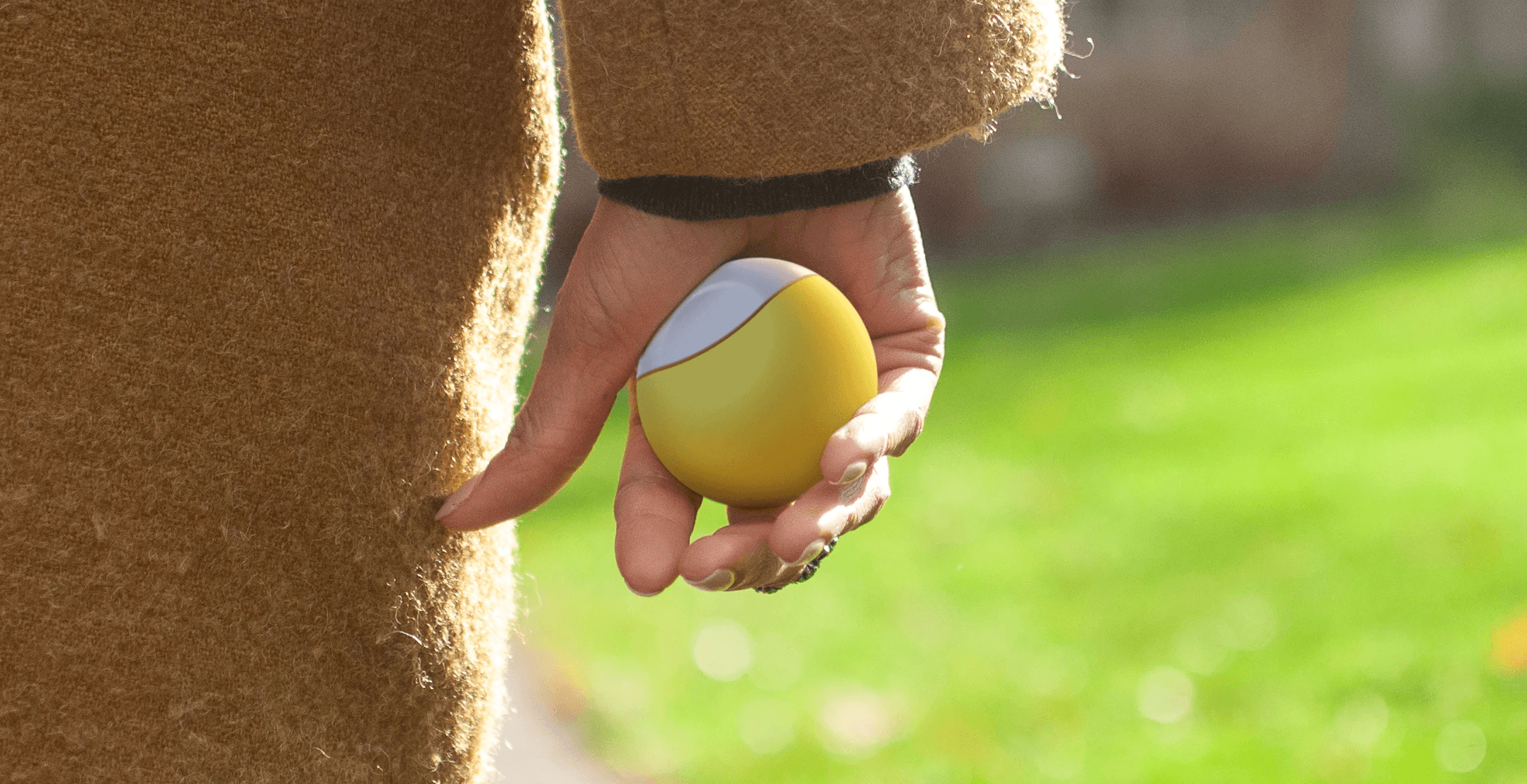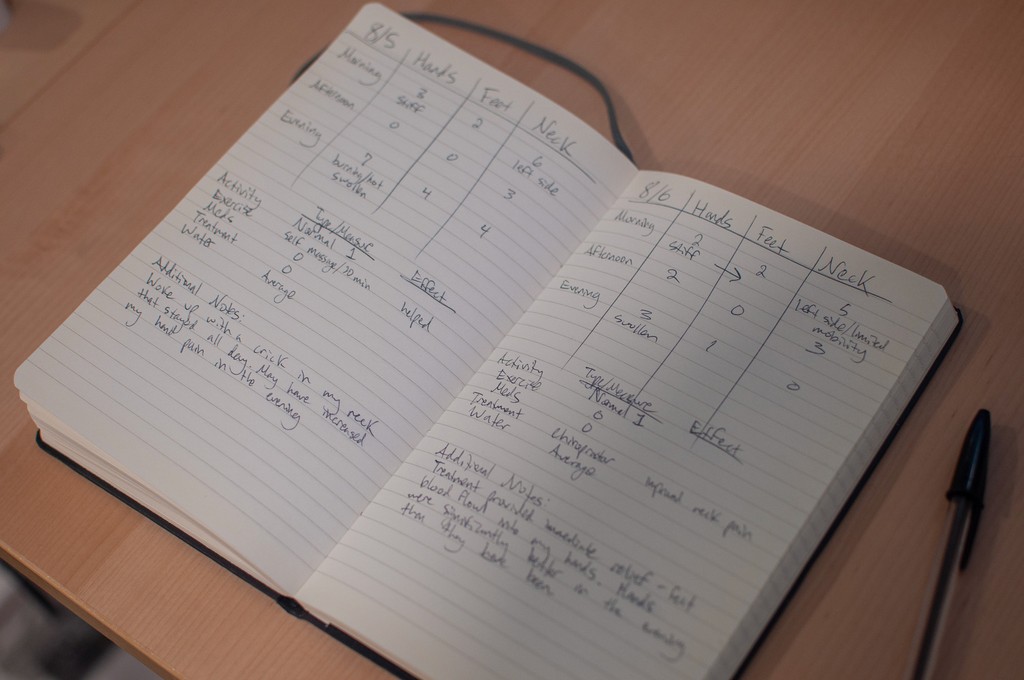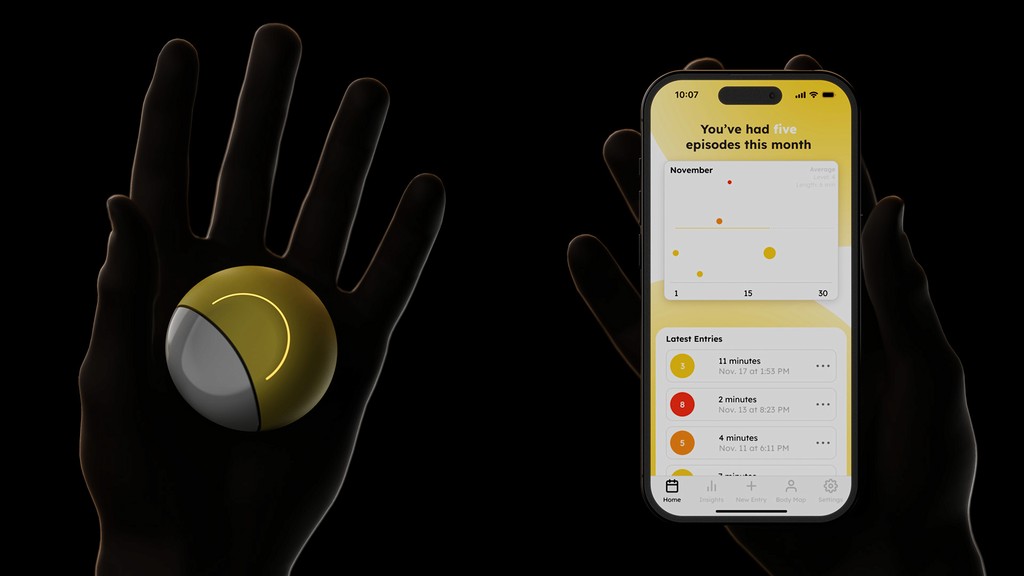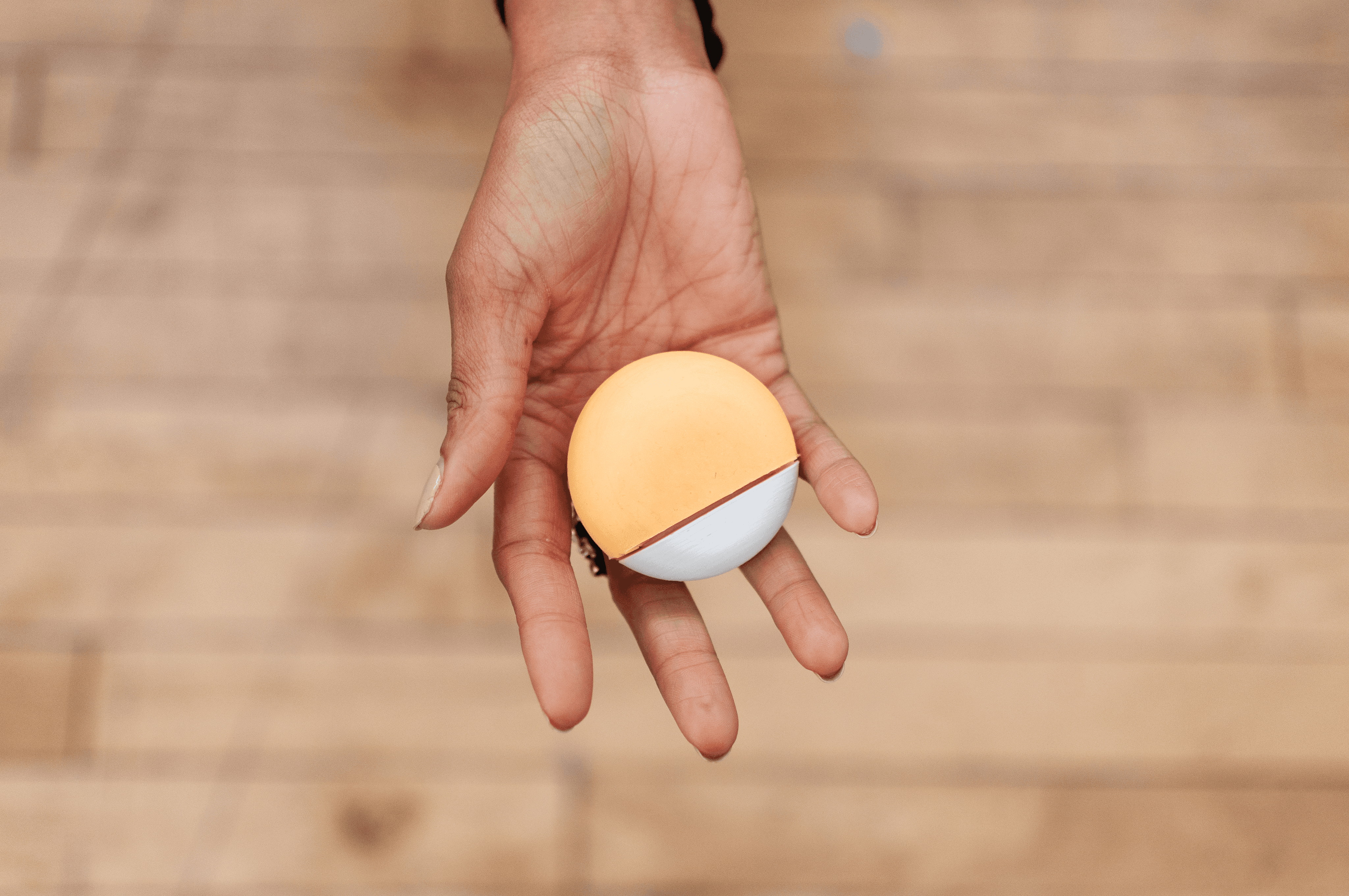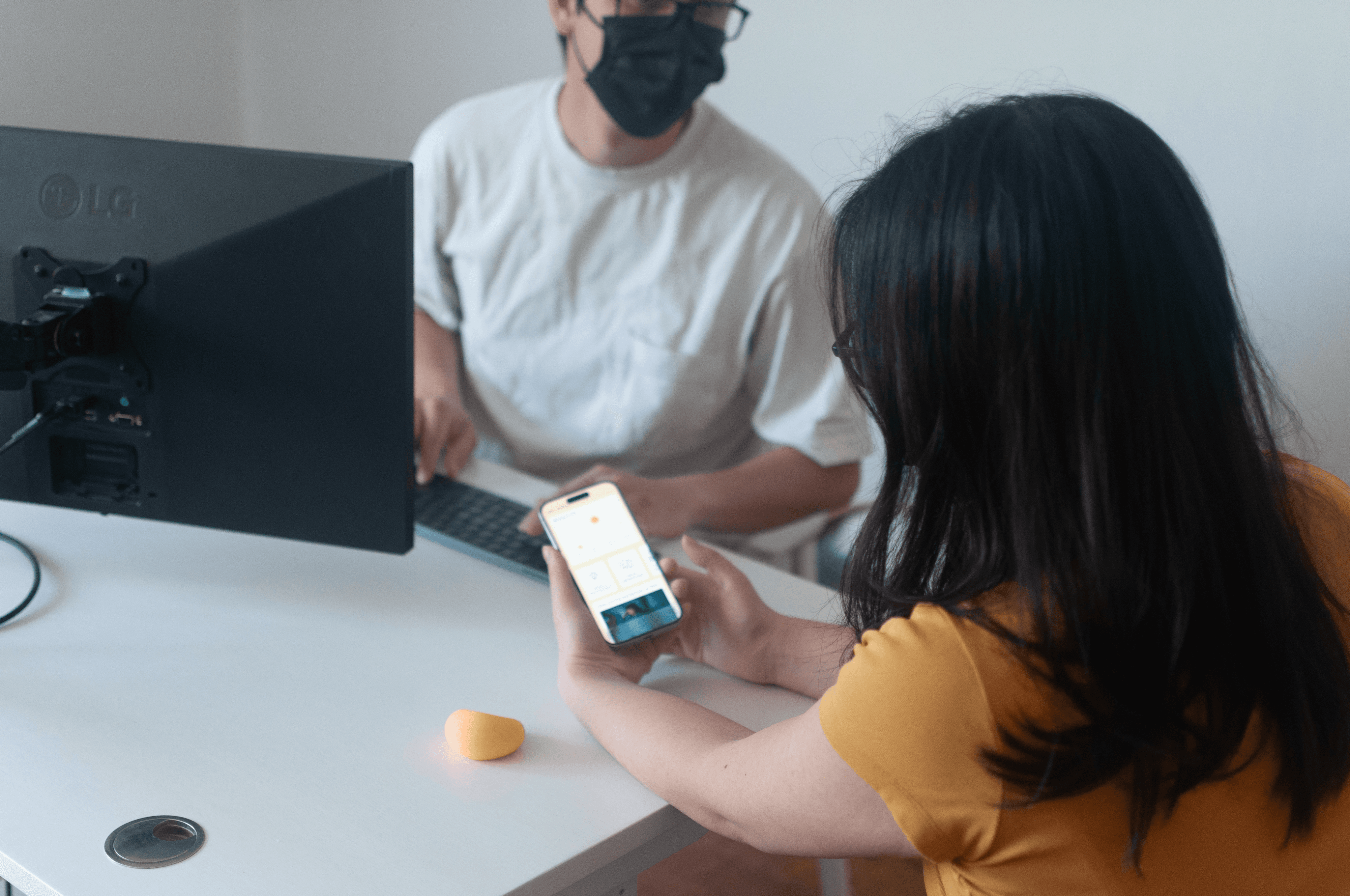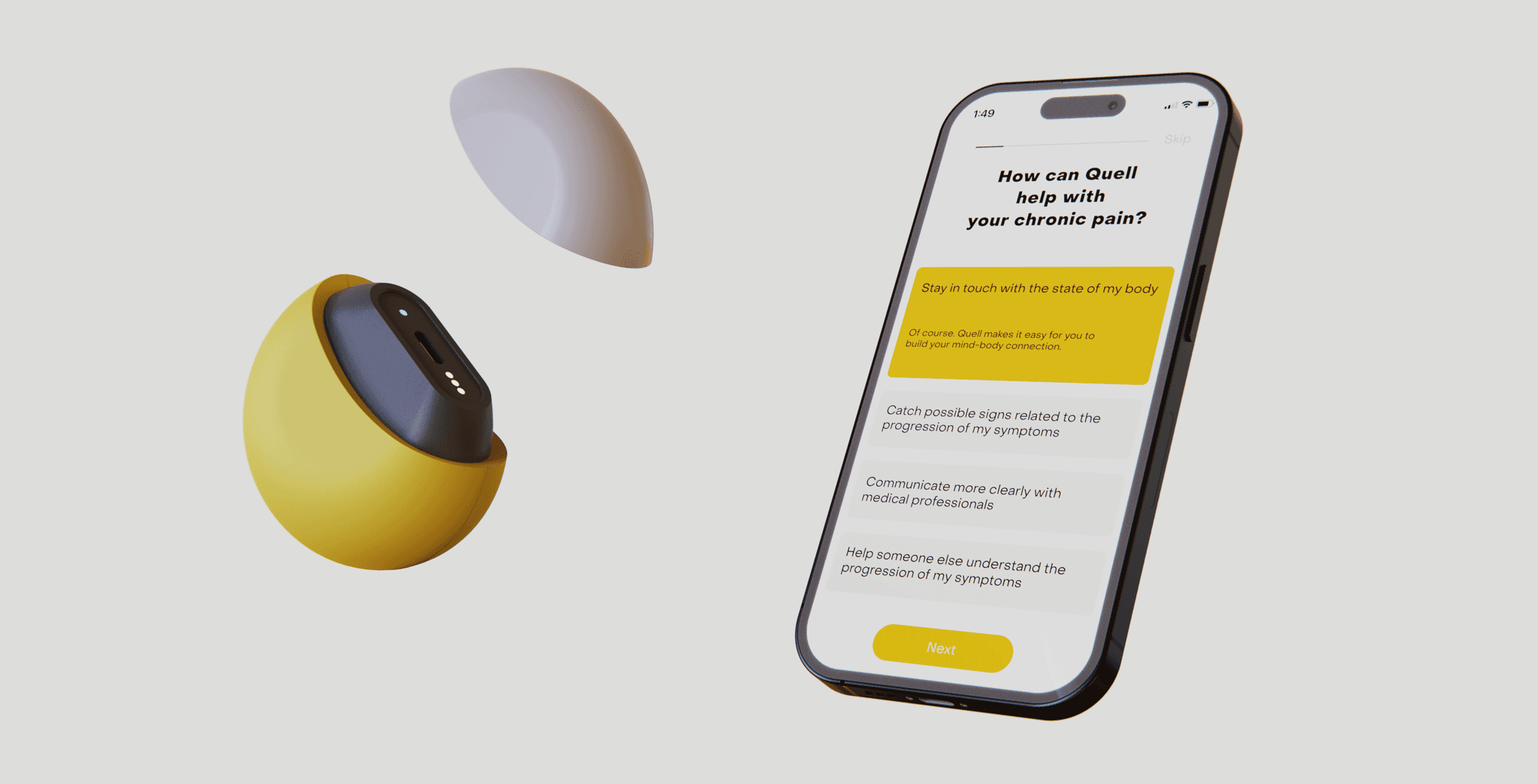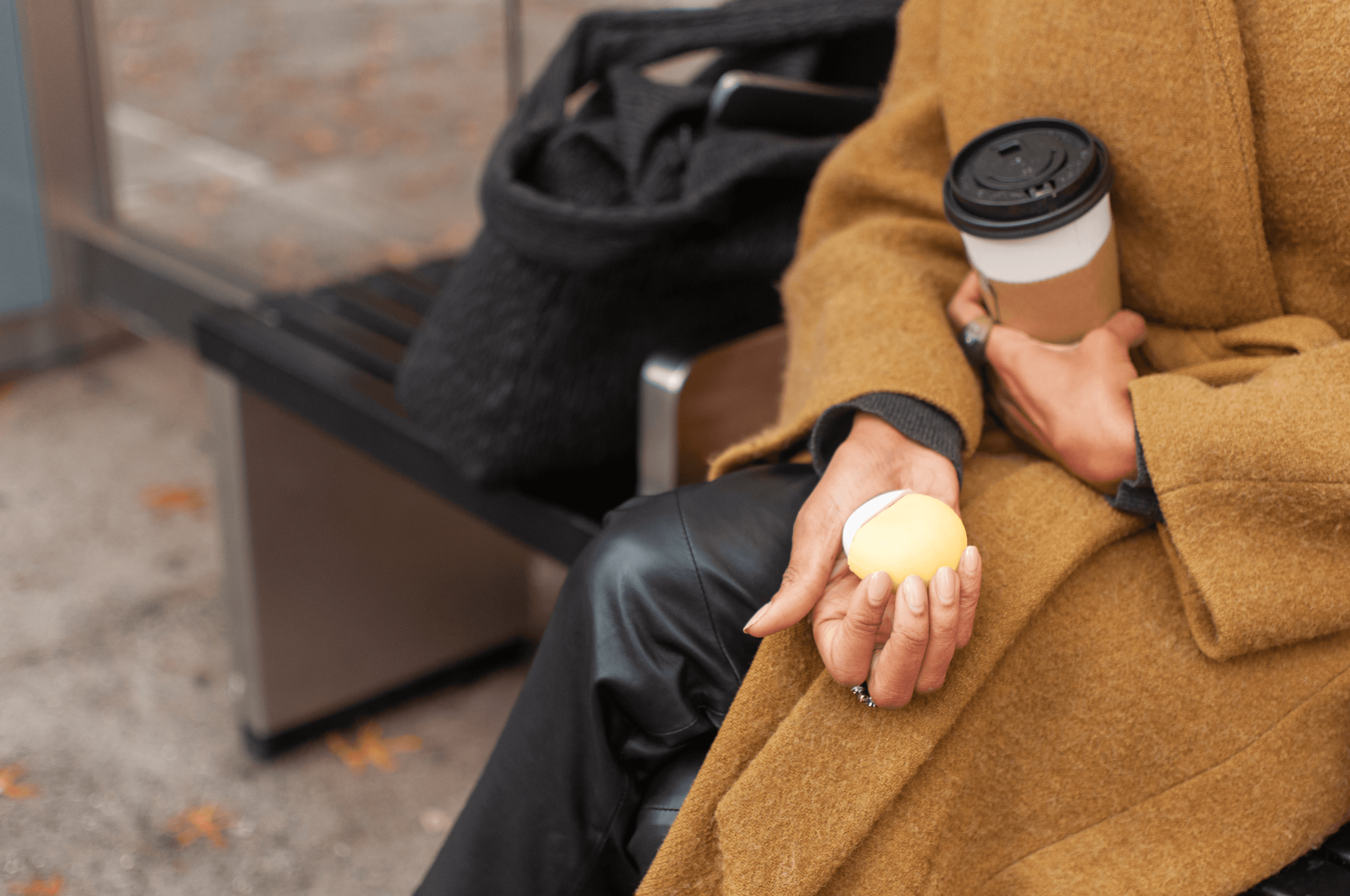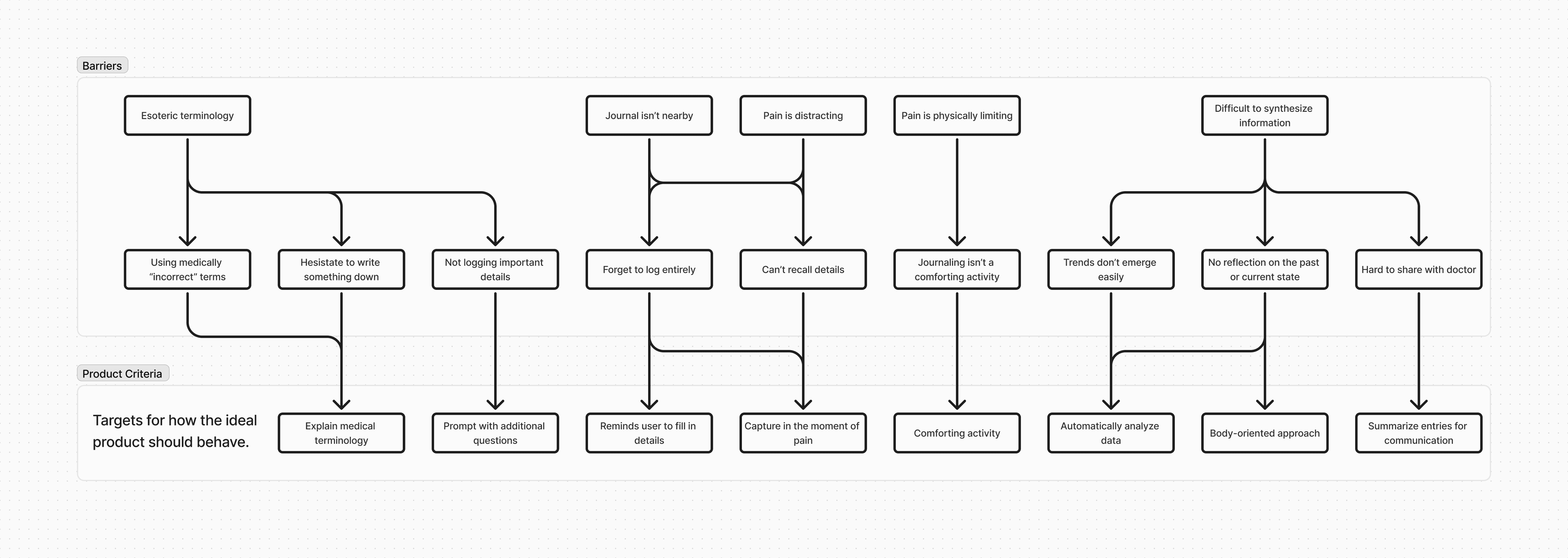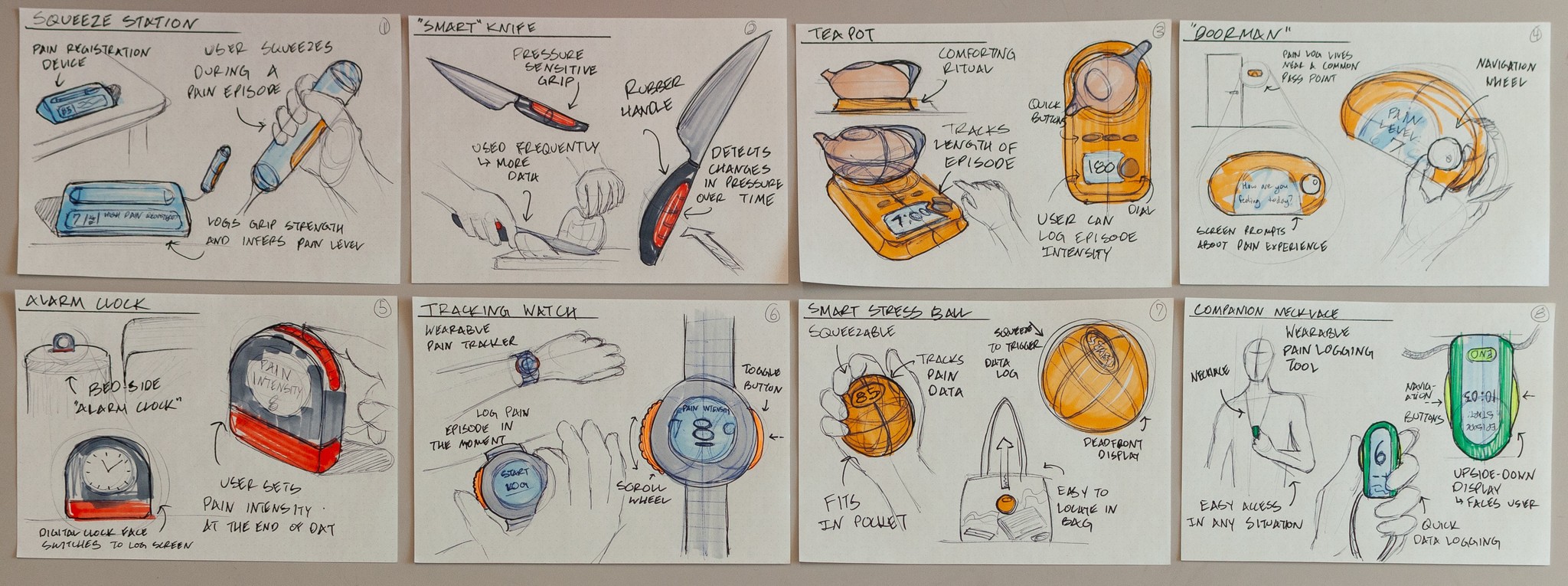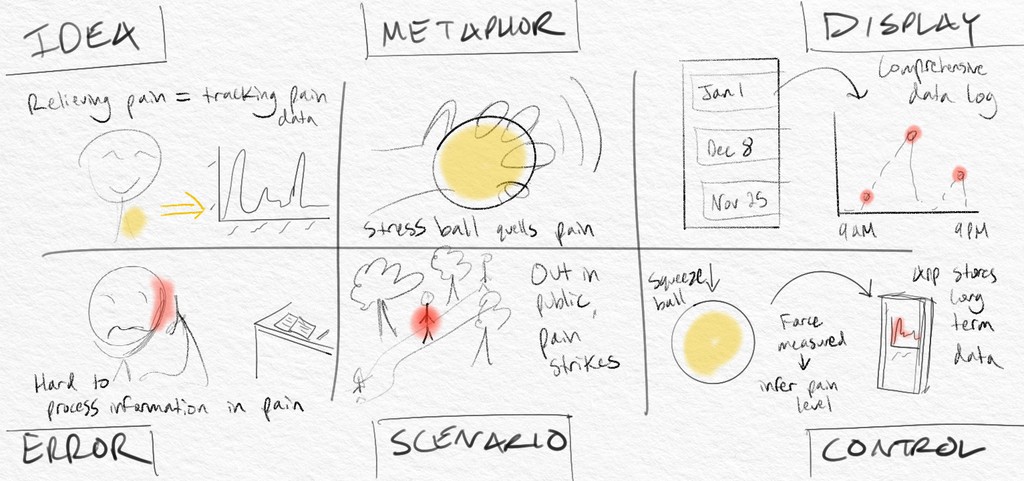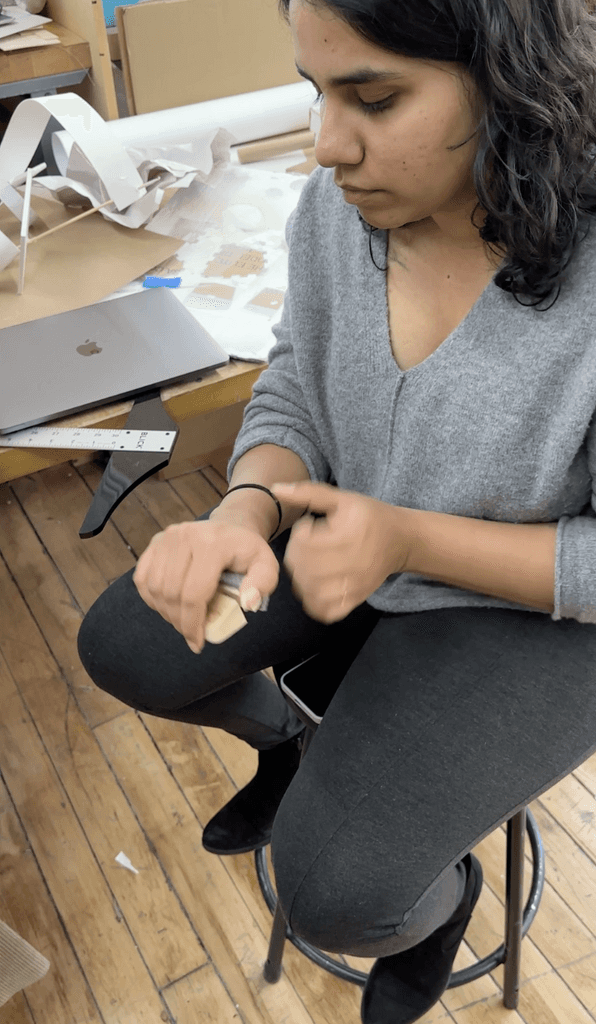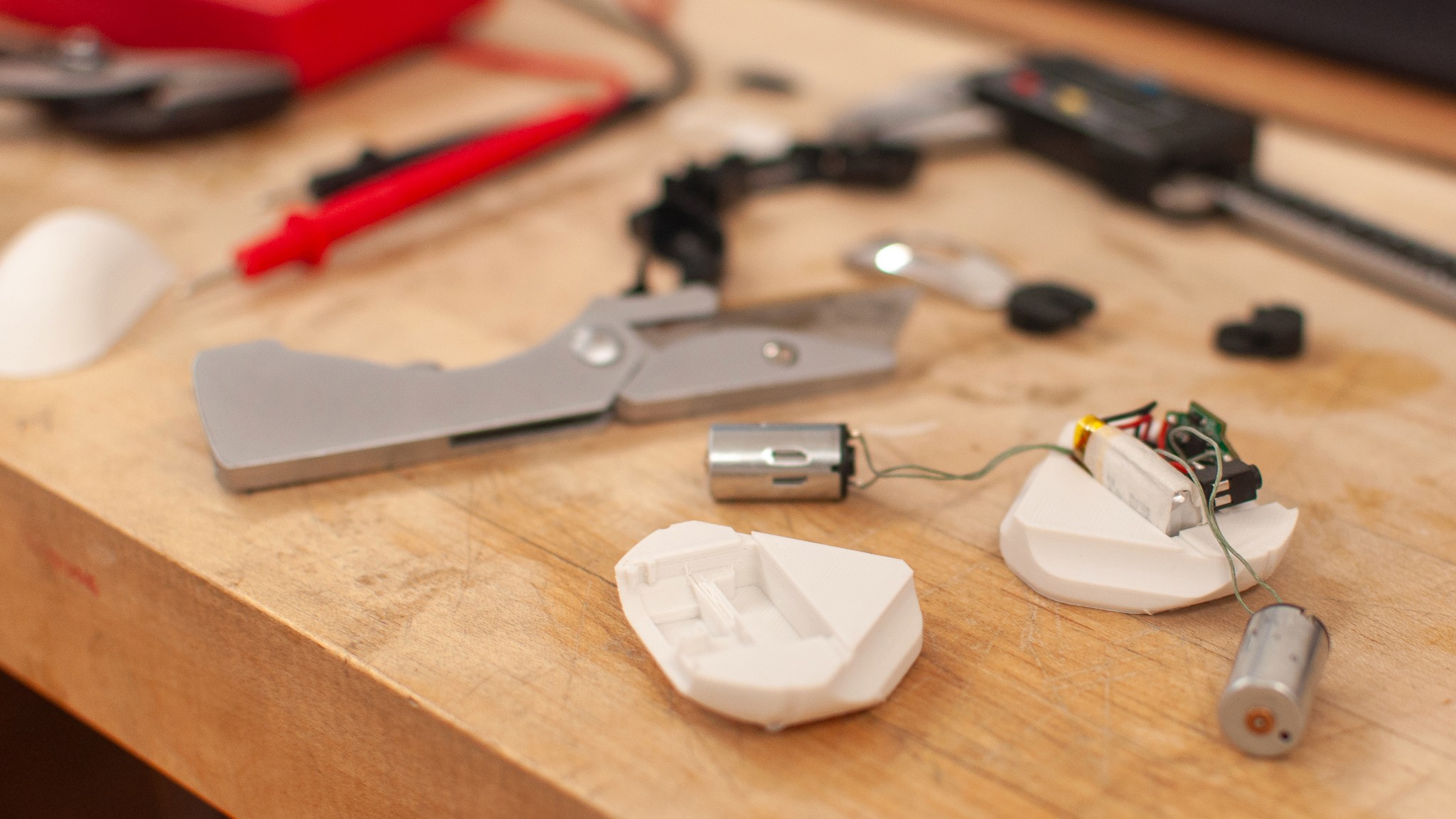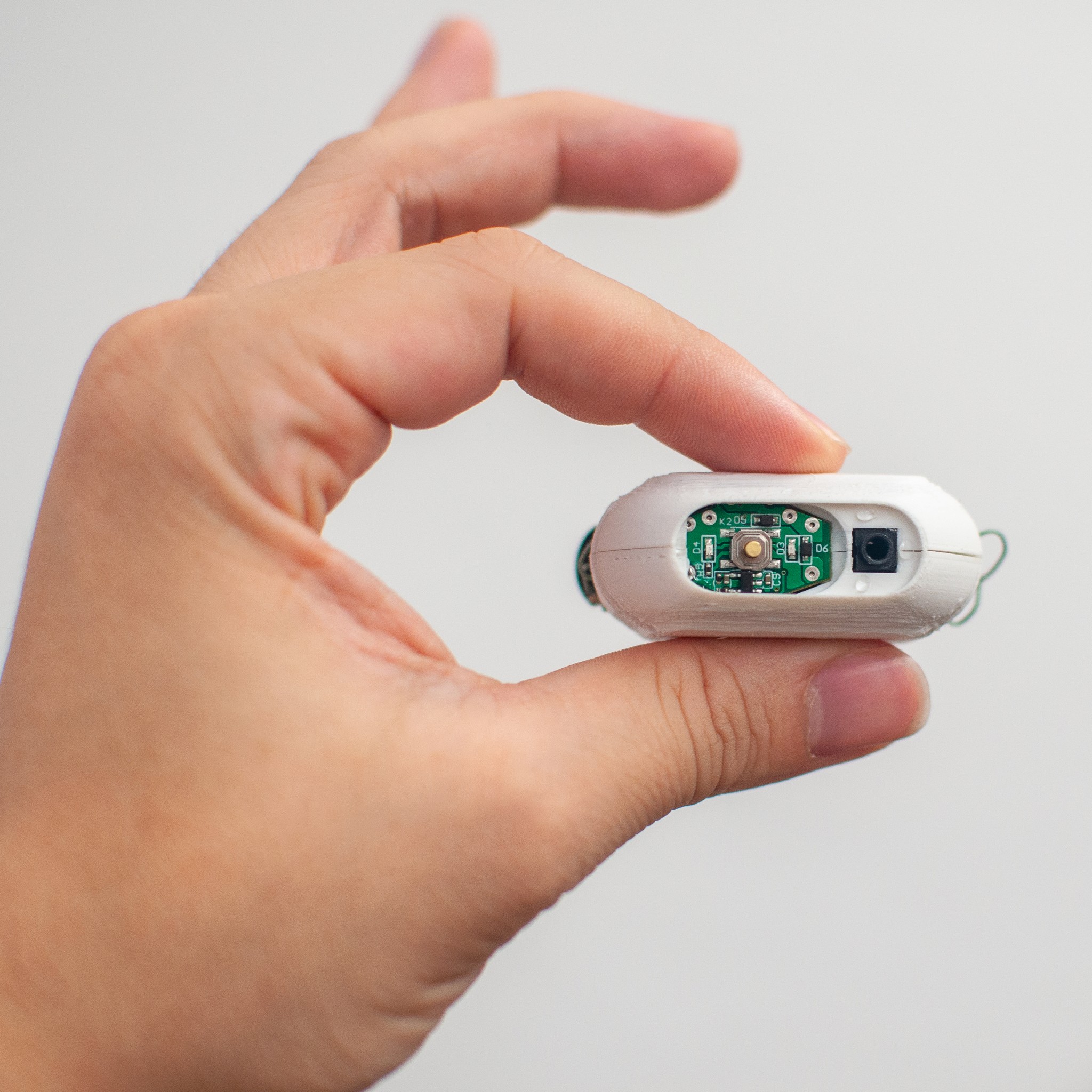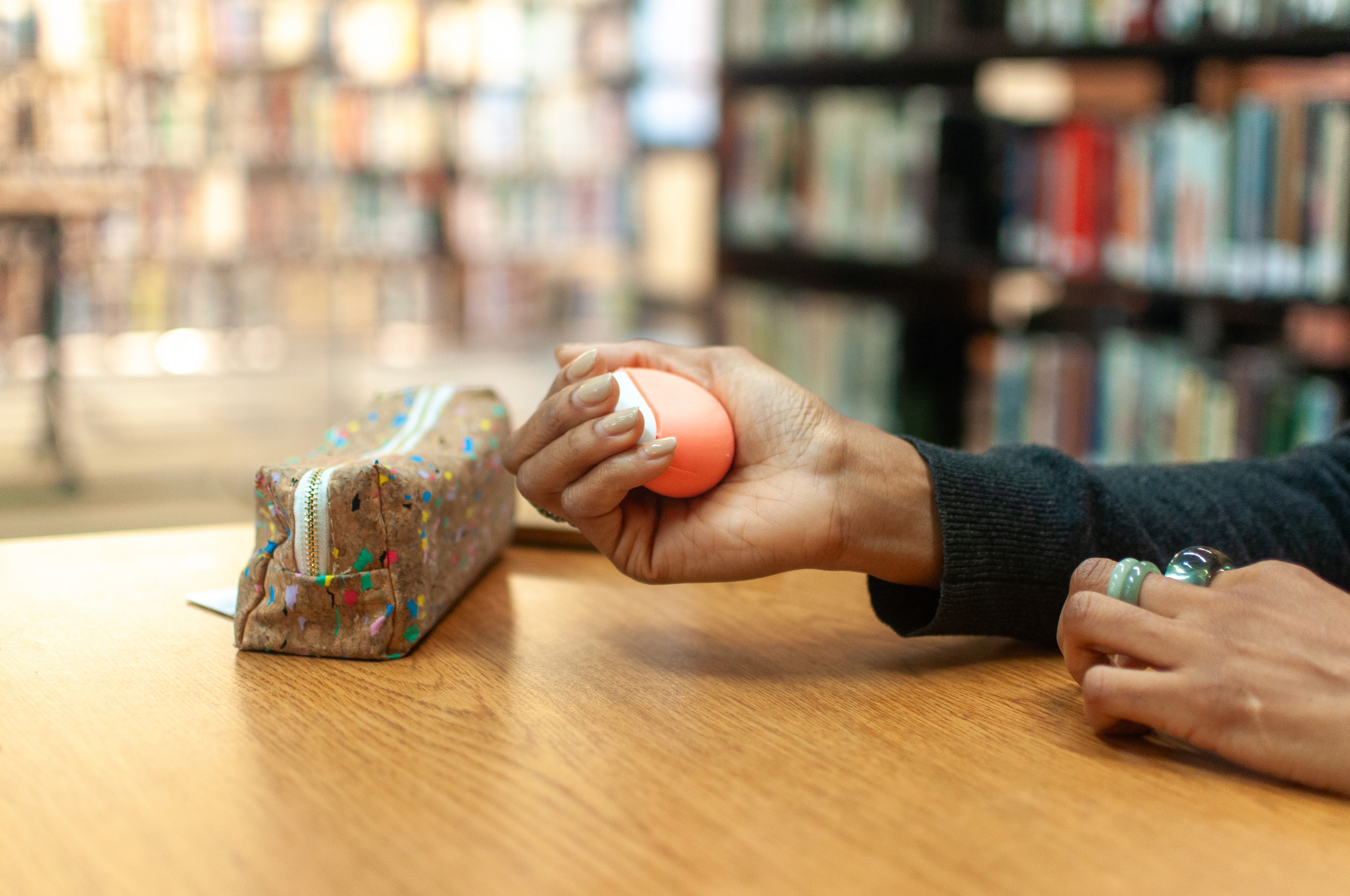Quell
Quell is a pain-tracking tool that provides short term anxiety relief and long term analysis of symptoms over time.
Purpose
Tracking chronic pain is difficult. To this day, pain journals are the top recommendation my medical professionals for tracking, but the reality is they are tedious to maintain. Quell provides an intuitive solution: a pressure point massage tool that logs usage.
Product
Quell is a portable device and app that provide a comforting way to track one's pain episodes. Designed as a pressure point massager, the device is a useful tool for alleviating pain and anxiety during an episode. Whenever its in use, it instantly starts an entry in the app's pain log, streamlining the process of capturing crucial information.
Pairing: Lifting the magnetic cap reveals Quell's charging port and indicator LEDs. The blue LED indicates when Quell is paired to a device over Bluetooth, while a row of white LEDs indicates battery level.
Starting: A quick triple squeeze let's Quell know you want to record a session. If the your phone is not nearby, Quell temporarily saves the data on-device to be synced later. The same sequence ends a session.
During: Soft vibrations comfort and augment Quell's function as a pressure point massage tool.
Ending: Side rocking toggles through pain level indication, one through ten, at the end of the session. Discrete elements were selected over numbers to improve legibility at all angles. Richer data can be input in the app later.
User Journey
1: Pain strikes
Maggie suffers from occasional gastrointestinal pain. Although she's grown accustomed to it, it's important for her to keep track of flair-ups so she can keep her doctor informed of the severity.
2: Introduce Quell
Fortunately, a friend recently informed her about Quell, which helps her track her pain episodes at home and on the go.
3: Release Anxiety
Regardless of where the pain is, Quell acts as an effective stopgap, massaging key pressure points in the hand to reduce anxiety.
4: Log episode
Whenever Quell is activated, an entry is immediately made in the Quell app. By simply logging the time and duration of the episode, Maggie has effortlessly captured the most important data, but more can be added to the entry in app, like pain quality, location, and external factors.
5: Capture trends
With consistent use over time, Quell can digest a large set of data and make it easy to spot patterns like recurring times of day, increasing frequency, and other useful trends that can paint a clear picture of her progress.
6: Communicate clearly
Prepared with data and a summary of her progress, Maggie can clearly communicate with a medical professional about how she's doing, empowering her to get the help she needs.
Personalized onboarding. Chronic pain is a unique experience for everyone, so Quell begins the app experience with a brief survey to understand your needs and goals. Afterward, a Bluetooth pairing process is initiated within the app.
Easy and discreet tracking anywhere. One of the challenges with pain journals is that pain can strike at any time. Quell makes it easy to discreetly manage pain in the moment.
Process
Despite the measurable prevalence and impacts of chronic pain, basic communication is one of the biggest barriers to treatment. Pain, by nature, makes it difficult to focus on anything else. Recognizing this challenge, I partnered with Samantha Clarke from the RCA to design a solution that effectively intercepts in the moment of pain.
Mapping out the barriers that exist with the current method of pain journaling helped define key criteria for an appropriate solution.

Guide the user through unfamiliar medical terms.

Prompt the user with further questions and reminders.

Comfort the user during moments of pain

Inform the user with synthesized data insights.

Ground the user in a strong mind-body connection.

